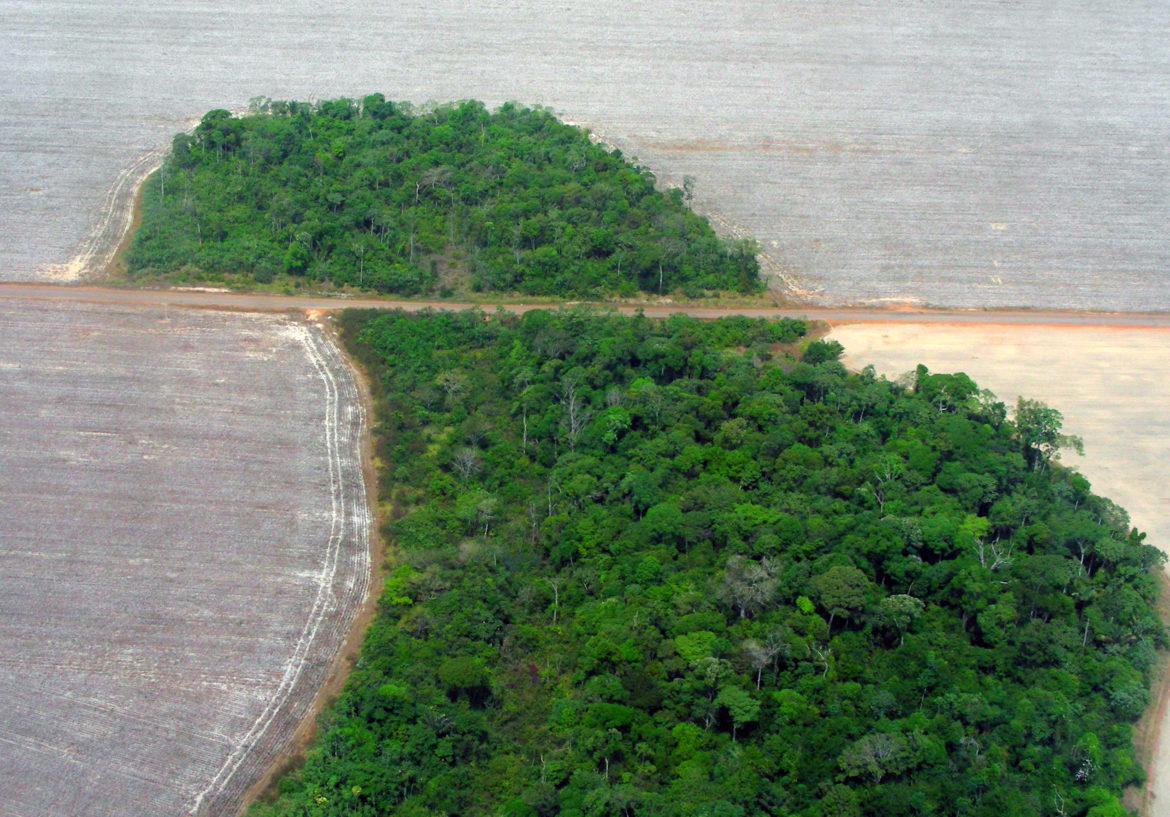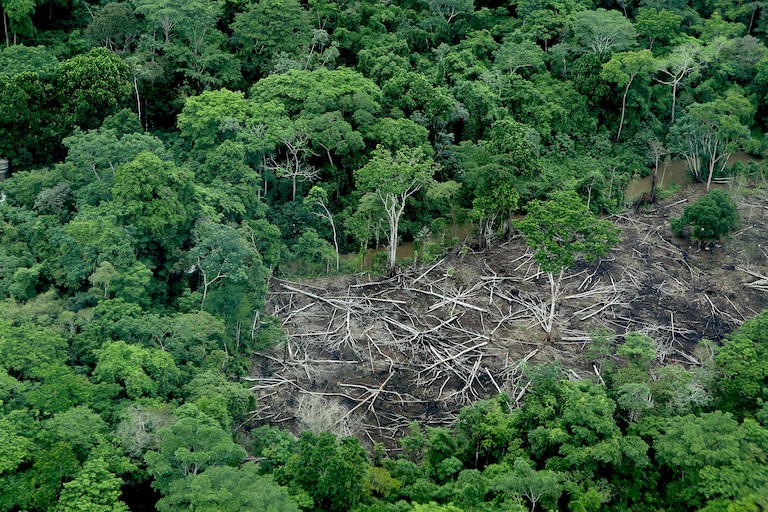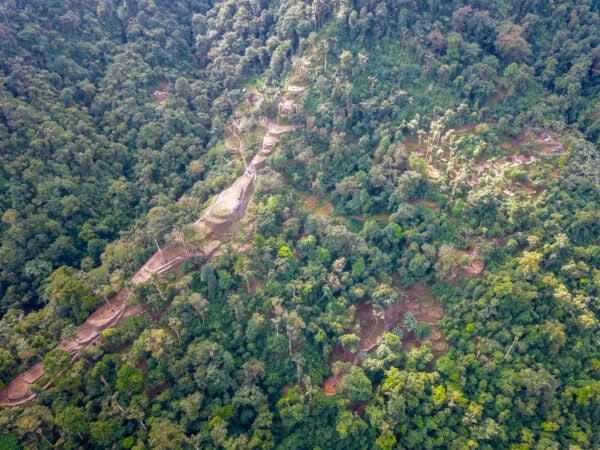By: Isidoro Hazbun
Original article in Spanish in El Heraldo / Opinion
More than 60% of human infectious diseases are caused by pathogens shared with wild or domestic animals. Some of these diseases have only recently emerged due to deforestation.

Many zoonoses, animal-related diseases that can incidentally be communicated to people, especially those caused by rare new viruses such as the SARS-CoV-2/coronavirus, are linked to large-scale changes in land use that affect biodiversity and the relationships between host animals, people and pathogens. Land modification, regardless of its reason, changes vegetation patterns, the dynamics of vector and host species, microclimates, and human contact with domestic and wild animals. All of these factors are crucial in the ecology of disease. The effects have been well studied and described for diseases such as malaria, where the precise role that deforestation in the development of agricultural settlements and commercial forest products plays in promoting the incidence of this disease—which, per the WHO, causes the death of 400,000 people annually—has been identified. What is worrisome is that the number of cataloged emerging infectious diseases, and especially those that originated in wildlife, has increased in recent decades due to the increase in deforestation of primary forests.
In the summer of 2010, the Darien, a tropical forest region located on the Colombian-Panamanian border, experienced an outbreak of human infections with the eastern equine encephalitis (EEE) virus, also known as the Madariaga virus. Encephalitis is inflammation of the brain, and can cause confusion, seizures, or sensory or motor problems. Like its cousin, the Venezuelan equine encephalitis virus, which caused an outbreak in the mid-1990s in La Guajira, Colombia that resulted in 14,156 human cases, where 1,258 required hospitalization and 26 died as a result of the disease, the disease is related to widespread logging and alteration of local forests. The fragmentation of ecosystems mixes people and animal species that wouldn’t normally interact. The 2010 EEE outbreak was the first documented in humans, and it’s believed to have affected about 100 people, especially children. In many, the virus caused severe neurological problems and is suspected of causing one death. Scientists are now reporting the identification of Madariaga in eight children in Haiti in 2015 and 2016, with the potential that it could move to other parts of the Caribbean or North America.

A degraded landscape with potential for pathogen emergence is the so-called “Deforestation Arc” in the southern Brazilian Amazon, the largest deforestation frontier in the world. Deforestation in this region is driven by the conversion of natural forests to intensive farmland and pastures for the production of agricultural products, including soybeans, beef, and corn, as well as for wood extraction. There, one finds two species of phyllostomid bats, the greater spear-nosed bat Phyllostomus hastatus and the gnome fruit-eating bat Dermanura gnoma, that have presented antibodies against the hantavirus. Hantaviruses have caused hemorrhagic fever with renal syndrome and epidemic kidney disease mainly in the Old World, and hantavirus pulmonary syndrome (HPS) in the Americas. Hantaviruses are believed to have originated from insectivorous bats or mammals and then spread to rodents, and can be extremely fatal. In a span of 175 days, between November 2018 and March 2019, 34 people in a remote area of the Argentine and Chilean Patagonia contracted HPS, which was transmitted from person to person, representing the largest outbreak of that virus caused by interhuman transmission registered in the world. The outbreak was caused by the Andes orthohantavirus (Southern variant) and caused 11 deaths, implying a case fatality rate of 32%. Pulmonary disorder progresses rapidly, and about 40% of patients die within 48 hours after admission to a hospital. A recent study in the “deforestation arc” found that the hantavirus is infecting bats from different trophic groups and that the hantavirus is circulating among bats in southern Amazonia. Deforestation in this region represents a threat to global health because it can be a critical point of emerging diseases, since it is an area rich in wildlife biodiversity and probably rich in diversity of microbes, many of which have not yet been identified by scientists. As stated, increased access to tropical forests by extractive industries and other actors could increase the risk of zoonotic diseases by changing the habitat and composition of the vector community, modifying the distribution of populations of wildlife and domestic animals, and increasing exposure to pathogens through increased human contact with animals.
The continuing effect of the HIV/AIDS and SARS-CoV-2 pandemics is a reminder of the risk of zoonotic pathogens spreading from their natural reservoirs to humans. Bold new approaches are needed. According to UN estimates, the world population will be more than 9 billion by 2050, and more than half of the world population already lives in urban areas. Changes in food production systems provide more food security for growing populations, but they also change the risks of zoonotic diseases in ways that challenge disease control. Industries based on natural resource extraction provide materials and economic incentives, but can lead to the release of pathogens that are new to humans. Guidelines for safe best practices that include ecological knowledge are urgently needed to reduce the risk of disease onset. Such guidelines should be mandatory through financing mechanisms that support large-scale development projects, or should be required by financial entities.
The effect of zoonotic diseases results in a recurring annual burden on the health and livelihoods of people worldwide, but disproportionately burdens low-income and middle-income countries. There are vast differences in public, veterinary, medical and training health infrastructure between developed and developing countries. Collaboration between different countries is required to prevent these diseases, as viruses do not stop at borders. An understanding of the relationship between environmental changes, the population dynamics of wildlife, and the dynamics of their microbes should be used to predict the risk of human infection with zoonoses.
Control of zoonotic diseases, by definition, should be a key mission of human health agencies, agricultural authorities and producers, and natural resource managers, all working cooperatively. Substantial investments in each of these sectors are essential because the ecological and social changes across the globe that enable infectious diseases to emerge are increasing at an unprecedented rate. Integrating efforts and coordinating budgetary resources for prevention and control is clearly a challenge that governments, both local and national, must face, and building capacity to sustain these efforts could be the greatest challenge of all, as seen today. Deforestation and drastic changes to our ecosystems are linked to emerging diseases.
Share this post
Bring awareness to our projects and mission by sharing this post with your friends.




